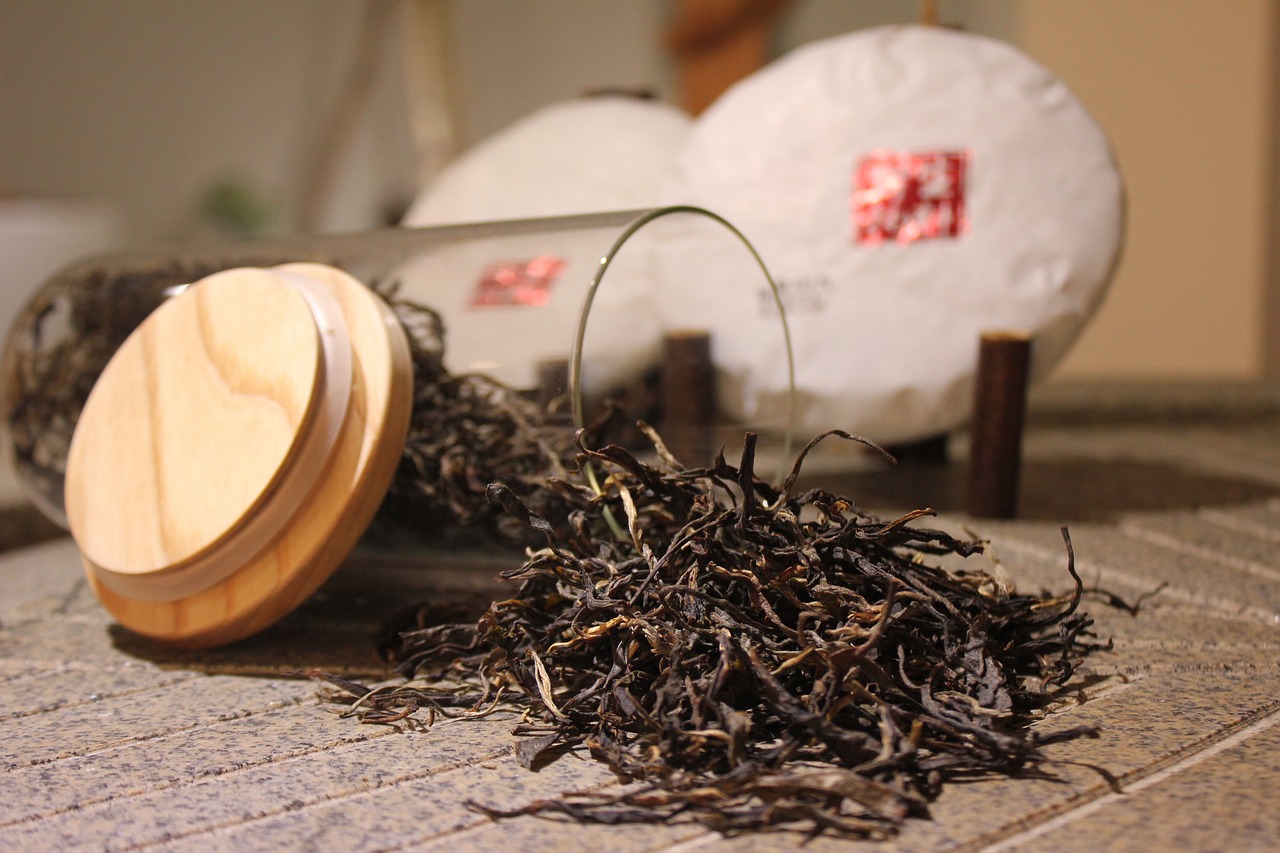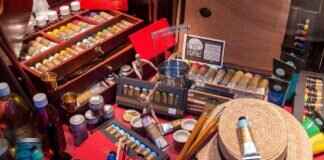This article explores the health benefits and drawbacks of bubble tea compared to traditional Asian herbal teas, helping you make an informed choice about your beverage preferences.
Bubble tea, also known as boba tea, is a popular drink that originated in Taiwan. It typically consists of a base of tea mixed with milk or fruit flavors, combined with chewy tapioca pearls. Understanding its nutritional content is essential for evaluating its health implications. A standard serving of bubble tea can contain:
- Calories: Approximately 300-500 calories
- Sugar: Up to 50 grams, depending on the flavor and preparation
- Fat: Varies based on milk content
Traditional Asian herbal teas, such as green tea, chamomile, and ginger tea, have been consumed for centuries and are celebrated for their numerous health benefits. These teas are often made from a variety of herbs, flowers, and spices, each contributing unique properties that promote overall wellness. For example:
- Green Tea: Rich in antioxidants, it may enhance metabolism.
- Ginger Tea: Known for its anti-inflammatory effects and digestive support.
- Chamomile Tea: Often used for its calming properties.
Herbal teas are renowned for their medicinal properties. They can aid digestion, boost immunity, and promote relaxation. For instance, chamomile is often recommended for sleep, while ginger tea can help alleviate nausea. The benefits of herbal teas extend beyond mere hydration, offering a range of wellness advantages.
Certain herbal teas stand out for their health benefits. Here are some top choices:
- Peppermint Tea: Great for digestive health.
- Hibiscus Tea: May help lower blood pressure.
- Rooibos Tea: Packed with antioxidants and caffeine-free.
While herbal teas are generally safe, some may have side effects or interact with medications. For example, certain herbs can affect blood sugar levels or blood pressure. It’s essential to consult a healthcare professional if you have underlying health conditions or are taking medications.
Bubble tea’s popularity has raised questions about its health effects. The drink’s high sugar content can lead to various health issues, including weight gain and increased risk of diabetes. Additionally, the tapioca pearls, while delicious, add extra calories without significant nutritional benefits.
Weight management is a common concern for many consumers. When comparing calorie counts and sugar levels, traditional herbal teas generally offer a lower-calorie option. For instance, a cup of green tea contains only about 2 calories, while bubble tea can range from 300 to 500 calories.
High sugar intake can lead to various health issues, including obesity and heart disease. Bubble tea’s sugar content can significantly exceed the daily recommended intake, while herbal teas typically contain little to no sugar, making them a healthier choice for those monitoring their sugar levels.
Both bubble tea and traditional herbal teas hold cultural significance in their respective communities. Bubble tea has become a trendy beverage, especially among younger generations, while herbal teas are often integrated into traditional medicine and cultural rituals, reflecting their ongoing relevance in Asian cultures.
Bubble tea has gained immense popularity worldwide, often seen as a symbol of modern youth culture. Its vibrant colors and customizable options make it appealing to a diverse audience. Social media has played a significant role in its rise, with many sharing their bubble tea experiences online.
Herbal teas are deeply rooted in Asian traditions, often used in ceremonies and as part of holistic health practices. Their importance in cultural rituals highlights their role not just as beverages but as integral components of health and wellness in many communities.
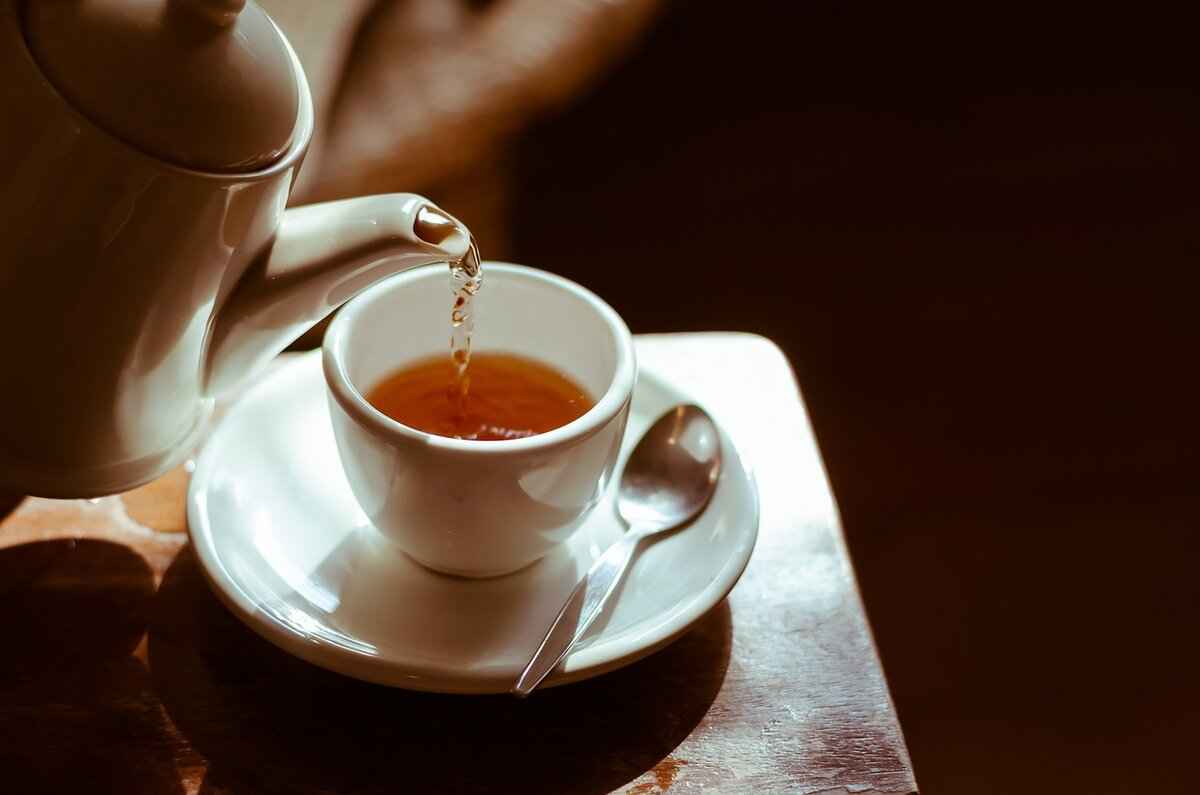
What is Bubble Tea and Its Nutritional Profile?
Bubble tea, often referred to as boba tea, is a delightful beverage that has captured the hearts of many around the world. Originating from Taiwan in the 1980s, this unique drink blends traditional tea with a variety of flavors, including milk and fruits, and is famously topped with chewy tapioca pearls. Its growing popularity has sparked interest in understanding its nutritional profile, which is essential for evaluating its health implications.
When it comes to the nutritional content of bubble tea, there are several factors to consider. Typically, a standard serving of bubble tea can contain:
- Calories: Ranges from 200 to 500 calories, depending on the ingredients and size.
- Sugar: Can contain up to 30 grams or more, primarily from added sweeteners and flavorings.
- Fat: Often includes milk or cream, contributing to the fat content, which can vary widely.
- Carbohydrates: The tapioca pearls themselves are high in carbohydrates, which can add to the overall caloric load.
Understanding these components is vital for health-conscious individuals. For instance, the high sugar content can lead to various health issues, including weight gain and increased risk of diabetes if consumed in excess. Additionally, the calories in bubble tea can quickly add up, especially when opting for larger sizes or extra toppings.
In contrast, traditional Asian herbal teas are often lower in calories and sugar, making them more suitable for those seeking a healthier beverage option. These teas are typically brewed from natural ingredients such as herbs, flowers, and spices, providing a range of health benefits without the added sugars found in bubble tea.
Moreover, the presence of antioxidants in herbal teas can contribute positively to overall health, supporting immune function and reducing inflammation. While bubble tea offers a unique flavor experience, it is essential to balance indulgence with nutritional awareness.
In summary, while bubble tea is a fun and flavorful drink, understanding its nutritional profile is crucial for making informed choices about consumption. Those who enjoy bubble tea should be mindful of portion sizes and frequency, considering healthier alternatives like traditional herbal teas for regular hydration.
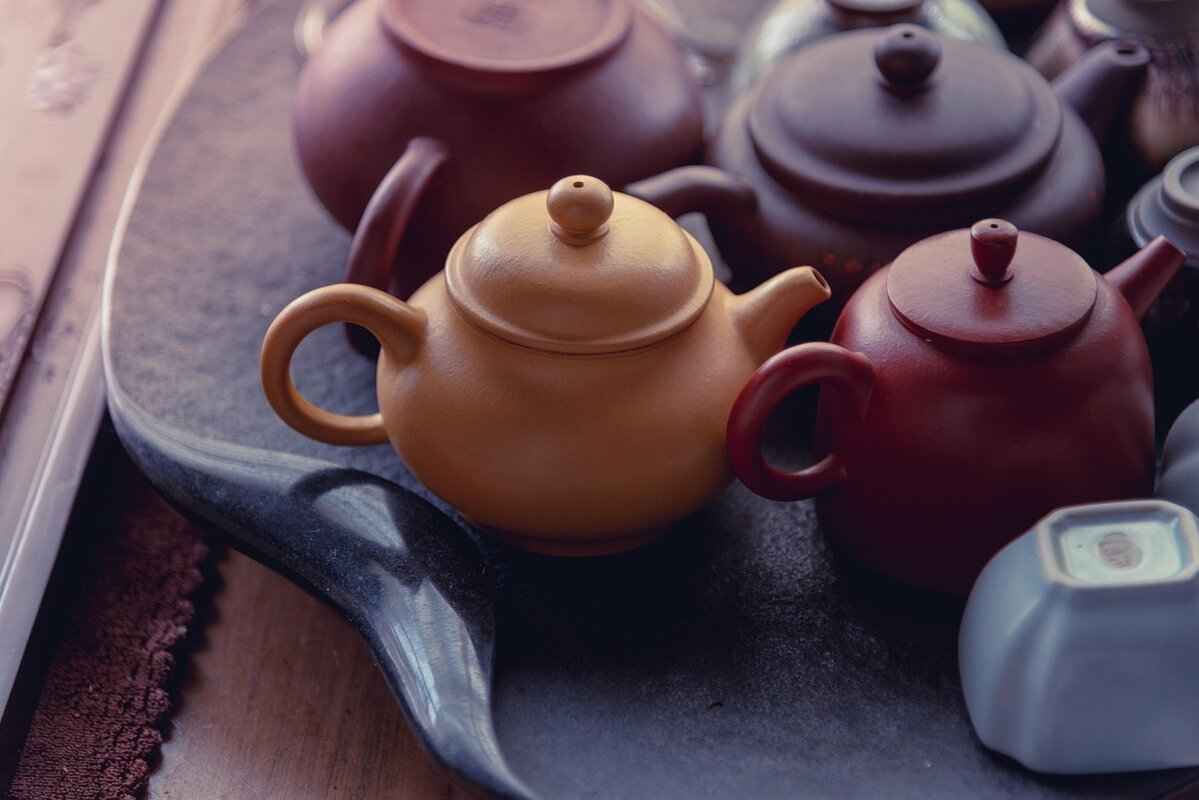
How Do Traditional Asian Herbal Teas Compare?
Traditional Asian herbal teas have been an integral part of wellness practices for centuries, revered not only for their delightful flavors but also for their numerous health benefits. These teas are crafted from a variety of plants, including leaves, flowers, seeds, and roots, each contributing unique properties that enhance overall well-being.
One of the most notable aspects of traditional herbal teas is their diverse array of ingredients. For instance, green tea is rich in antioxidants and is celebrated for its potential to boost metabolism and support heart health. Ginger tea, on the other hand, is renowned for its anti-inflammatory properties and ability to aid digestion. Similarly, chamomile tea is often used for its calming effects, promoting relaxation and better sleep quality.
| Herbal Tea | Main Benefits |
|---|---|
| Green Tea | Rich in antioxidants, boosts metabolism |
| Ginger Tea | Anti-inflammatory, aids digestion |
| Chamomile Tea | Promotes relaxation, improves sleep |
| Hibiscus Tea | Supports heart health, lowers blood pressure |
In addition to their individual benefits, many traditional herbal teas are often blended to enhance their therapeutic effects. For example, a blend of peppermint and lemon balm can be used to relieve stress and promote mental clarity. These combinations not only provide a rich tapestry of flavors but also synergistically amplify the health benefits.
Moreover, the consumption of herbal teas is deeply rooted in cultural practices. In many Asian cultures, these teas are not just beverages; they are a part of daily rituals and social gatherings. They are often served during family meals or shared among friends, symbolizing hospitality and wellness.
While the benefits of herbal teas are well-documented, it is crucial to approach them with an understanding of potential risks. Some herbal ingredients can interact with medications or cause allergic reactions in sensitive individuals. For instance, echinacea is widely used to boost the immune system, but it may not be suitable for everyone, particularly those with certain allergies.
In summary, traditional Asian herbal teas offer a rich variety of flavors and health benefits, making them a valuable addition to any wellness routine. By understanding the unique properties of different herbal teas, individuals can make informed choices that align with their health goals. Whether seeking to improve digestion, enhance relaxation, or simply enjoy a flavorful beverage, traditional herbal teas stand out as a healthy alternative to many modern drinks.
What Are the Health Benefits of Herbal Teas?
Herbal teas have been cherished for centuries, not only for their delightful flavors but also for their medicinal properties. These infusions are derived from various plants, including leaves, flowers, roots, and spices, and are known to provide a plethora of health benefits. This section delves into the unique advantages of herbal teas, highlighting their contributions to overall wellness.
Many herbal teas, such as peppermint and ginger, are renowned for their ability to aid digestion. Peppermint tea can relax the muscles of the gastrointestinal tract, alleviating symptoms of bloating and discomfort. Meanwhile, ginger tea is often used to combat nausea and promote healthy digestion by stimulating saliva and bile production.
Herbal teas can play a significant role in enhancing the body’s immune system. For instance, echinacea tea is widely recognized for its potential to reduce the duration and severity of colds. Additionally, elderberry tea is packed with antioxidants and vitamins that may help fend off infections and support overall health.
In our fast-paced world, finding moments of relaxation is essential. Herbal teas such as chamomile and lavender are celebrated for their calming effects. Chamomile tea is often consumed before bedtime to promote sleep, while lavender tea can help reduce anxiety and stress levels, making it a perfect choice for unwinding after a long day.
- Hibiscus Tea: Known for its ability to help lower blood pressure and improve heart health.
- Rooibos Tea: Rich in antioxidants, it supports skin health and may reduce inflammation.
- Turmeric Tea: Contains curcumin, which has anti-inflammatory properties and may aid in pain relief.
While herbal teas are generally safe for most individuals, it is important to note that some may cause adverse reactions or interact with medications. For example, licorice root tea can elevate blood pressure if consumed in large quantities. Always consult with a healthcare provider if you have underlying health conditions or are pregnant before incorporating new herbal teas into your routine.
In conclusion, herbal teas are not only a soothing beverage choice but also a source of numerous health benefits. From aiding digestion and boosting immunity to promoting relaxation, these teas can enhance overall well-being. With a wide variety of options available, there is an herbal tea suitable for everyone. Always remember to choose high-quality ingredients to maximize the health benefits of your herbal tea experience.
Which Herbal Teas Are Best for Wellness?
When it comes to enhancing overall wellness, herbal teas have gained significant attention for their myriad health benefits. Among the many options available, certain herbal teas stand out due to their unique properties and proven effects on health. This section delves into the top herbal teas that are particularly known for promoting well-being.
Chamomile tea is renowned for its calming effects. Rich in antioxidants, this herbal tea is often used to reduce anxiety and improve sleep quality. Studies have shown that chamomile can help alleviate insomnia and promote relaxation, making it a popular choice for those seeking a peaceful night’s sleep.
Ginger tea is another powerhouse in the realm of herbal wellness. Known for its anti-inflammatory properties, ginger can aid in digestion and help alleviate nausea. It is often recommended for those suffering from motion sickness or morning sickness during pregnancy. Additionally, ginger tea may enhance immune function and reduce the risk of chronic diseases.
Peppermint tea is celebrated not just for its refreshing taste but also for its ability to support digestive health. The menthol in peppermint can help relax the muscles of the gastrointestinal tract, making it effective in relieving symptoms of bloating and indigestion. Furthermore, its soothing aroma can also help relieve headaches and sinus congestion.
Rooibos tea, a South African herbal tea, is caffeine-free and rich in antioxidants. It is known for its heart health benefits and may help reduce inflammation and improve circulation. Rooibos is also rich in minerals, making it a great choice for those looking to boost their nutrient intake without the jitters associated with caffeinated beverages.
Hibiscus tea is not only vibrant in color but also packed with health benefits. Research suggests that hibiscus tea can help lower blood pressure and cholesterol levels, contributing to cardiovascular health. Its high vitamin C content also supports the immune system, making it a great choice for overall wellness.
Lemon balm tea, derived from the lemon balm plant, is known for its soothing properties. It can help alleviate stress and improve mood, making it a perfect beverage for those feeling overwhelmed. Additionally, lemon balm has been shown to enhance cognitive function, which can be beneficial for memory and concentration.
Turmeric tea, often made with fresh turmeric root or turmeric powder, is famous for its powerful anti-inflammatory and antioxidant properties. Curcumin, the active compound in turmeric, has been studied for its potential to combat chronic diseases and promote joint health. This tea can be a comforting choice for those dealing with inflammation or arthritis.
In conclusion, incorporating these herbal teas into your daily routine can provide a variety of health benefits, from promoting relaxation to enhancing digestion. Each tea offers unique properties that can contribute to overall wellness, making them an excellent addition to a healthy lifestyle.
Are There Any Risks Associated with Herbal Teas?
When it comes to consuming herbal teas, many people are drawn to their natural flavors and potential health benefits. However, it’s essential to recognize that while these beverages are generally considered safe, they can also pose certain risks. This section aims to illuminate the potential side effects and interactions associated with herbal teas, ensuring that consumers are well-informed.
Herbal teas are made from a variety of plants, including leaves, flowers, and roots. Although many people enjoy these beverages without any adverse effects, some individuals may experience side effects due to the specific ingredients used. It’s crucial to be aware of the following:
- Allergic Reactions: Some herbal teas can trigger allergic responses in sensitive individuals. Ingredients like chamomile, for instance, are related to ragweed and may cause reactions in those with pollen allergies.
- Digestive Issues: Certain herbs, such as peppermint or ginger, may lead to mild digestive discomfort for some people, including symptoms like nausea or heartburn.
- Interactions with Medications: Herbal teas can interact with prescription medications, potentially altering their effectiveness. For example, St. John’s Wort can interfere with antidepressants, while ginger may affect blood thinners.
It’s important to consider the specific herbs used in herbal teas, as some may carry more significant risks than others:
| Herb | Potential Risks |
|---|---|
| Licorice Root | Can cause high blood pressure and low potassium levels when consumed in large amounts. |
| Ginseng | May lead to insomnia, headaches, and digestive issues, especially when taken in excess. |
| Hibiscus | Can lower blood pressure; caution is advised for those on antihypertensive medications. |
While many can enjoy herbal teas without issues, certain populations should exercise caution:
- Pregnant or Nursing Women: Some herbs may not be safe during pregnancy or lactation.
- Individuals with Chronic Conditions: Those with liver or kidney disease should consult a healthcare provider before consuming herbal teas.
- Children: Some herbs may not be suitable for young children due to their potency.
Before incorporating herbal teas into your routine, especially if you are on medication or have underlying health conditions, it is advisable to consult with a healthcare professional. They can provide personalized advice based on your health history and current medications.
In conclusion, while herbal teas can offer numerous health benefits, it’s essential to remain vigilant about potential risks. By being informed and cautious, you can enjoy your herbal tea experience safely and healthily.
How Does Bubble Tea Affect Your Health?
Bubble tea, a delightful concoction of tea, milk, and chewy tapioca pearls, has surged in popularity over the past few years. However, as its fan base grows, so do the concerns regarding its health implications. Understanding the nutritional profile of bubble tea is essential for those who enjoy this trendy beverage.
What Is the Sugar Content in Bubble Tea?One of the primary health concerns surrounding bubble tea is its sugar content. A typical serving can contain anywhere from 30 to 60 grams of sugar, depending on the type and amount of sweetener used. This is significantly higher than most traditional herbal teas, which often have little to no added sugar. High sugar intake can lead to various health issues, including obesity, diabetes, and heart disease. Therefore, consumers should be mindful of their sugar consumption when indulging in bubble tea.
Caloric Count: How Does It Compare?In addition to sugar, the caloric count of bubble tea is another aspect to consider. A standard serving can range from 200 to 500 calories, depending on the ingredients and portion size. In contrast, many herbal teas are virtually calorie-free, making them a more suitable choice for those monitoring their weight. It is crucial to check the nutritional information when ordering bubble tea, as customization options can significantly alter the caloric value.
The Role of Tapioca Pearls in NutritionThe chewy tapioca pearls that characterize bubble tea also contribute to its nutritional profile. Made primarily from cassava starch, these pearls are rich in carbohydrates but offer little in terms of vitamins and minerals. While they provide a fun texture, they can add unnecessary calories to your drink without delivering substantial nutritional benefits. In comparison, herbal teas often contain various beneficial compounds, such as antioxidants and vitamins, which can promote overall health.
Are There Health Risks Associated with Bubble Tea?While enjoying bubble tea in moderation is generally safe for most people, excessive consumption can lead to health risks. The high sugar and calorie content can contribute to weight gain and metabolic issues. Additionally, some bubble teas contain additives and artificial flavors that may not be suitable for everyone. It is advisable for individuals with specific dietary restrictions or health conditions to consult with a healthcare professional before indulging in bubble tea regularly.
Choosing Wisely: Making Healthier Bubble Tea ChoicesFor those who love bubble tea but are concerned about its health effects, there are ways to make healthier choices. Opting for less sweetened versions, choosing fruit-based teas over milk-based ones, and limiting the number of tapioca pearls can help reduce sugar and calorie intake. Additionally, some shops offer alternatives like fruit jellies or agar pearls, which may provide a healthier option.
In summary, bubble tea can be a delicious treat, but it’s essential to be aware of its sugar content, caloric value, and the nutritional impact of its ingredients. By making informed choices, you can enjoy this trendy beverage while maintaining a balanced diet.
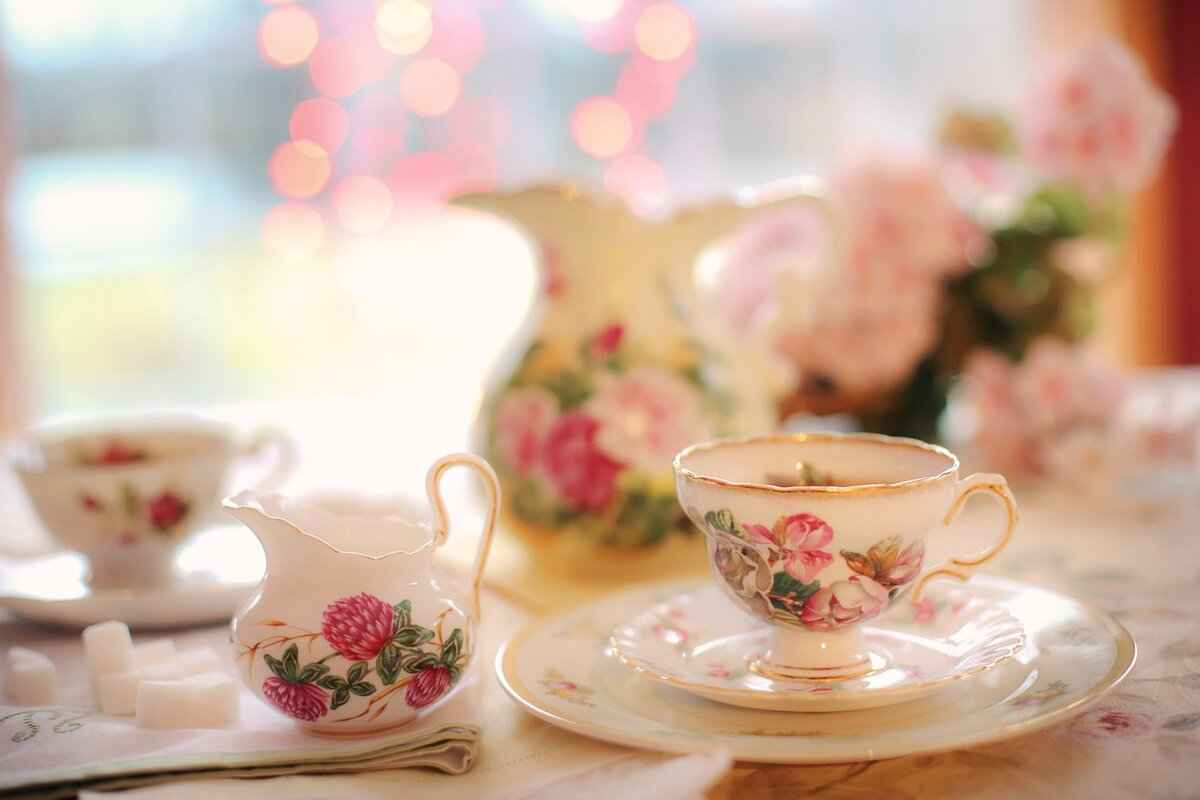
Which Beverage Is Better for Weight Management?
Weight management is a prevalent concern among many individuals seeking to maintain a healthy lifestyle. As consumers become more health-conscious, the choice between bubble tea and traditional Asian herbal teas has gained significant attention. This section delves into the calorie counts and sugar levels of these beverages, providing insights to help you make informed decisions regarding weight control.
Understanding the caloric content of beverages is crucial for effective weight management. On average, a standard serving of bubble tea can contain anywhere from 300 to 600 calories, depending on the ingredients and portion size. This high caloric count is primarily due to the addition of sweeteners, flavored syrups, and the chewy tapioca pearls.
In contrast, most traditional herbal teas are virtually calorie-free, making them a more suitable option for those monitoring their weight. For instance, a cup of chamomile or green tea typically contains less than 5 calories, allowing for guilt-free consumption.
Another critical factor in weight management is sugar content. Bubble tea is notorious for its high sugar levels, often exceeding 30 grams per serving. This excessive sugar intake can contribute to weight gain and other health issues, such as increased risk of diabetes and heart disease.
On the other hand, herbal teas generally contain no added sugars and are often enjoyed for their natural flavors. For example, teas like ginger or peppermint not only provide a refreshing taste but also come with the added benefit of being low in sugar, making them excellent choices for weight-conscious consumers.
While bubble tea can be a delightful treat, its nutritional benefits are often overshadowed by its calorie and sugar content. In contrast, herbal teas are rich in antioxidants and other beneficial compounds. For instance, green tea is known for its metabolism-boosting properties, while chamomile can aid in digestion and promote relaxation.
Moreover, the presence of these beneficial compounds in herbal teas can support overall wellness, making them a more advantageous choice for those focused on long-term health and weight management.
- Opt for Smaller Portions: If you enjoy bubble tea, consider ordering a smaller size to reduce calorie and sugar intake.
- Customize Your Drink: Request less sugar or choose a fruit-based bubble tea to lower caloric content.
- Incorporate Herbal Teas: Replace sugary beverages with herbal teas throughout the day for hydration without the added calories.
In summary, when comparing bubble tea and traditional herbal teas, it is clear that herbal teas present a more favorable option for weight management due to their low calorie and low sugar profiles. By making informed choices and being mindful of your beverage selections, you can better support your weight management goals while enjoying delicious drinks.
What Are the Caloric Differences?
When it comes to making healthy beverage choices, understanding the caloric content of what you consume is essential. In this section, we will delve into the caloric differences between bubble tea and various herbal teas. This comparison is not only important for weight management but also for overall health and wellness.
Bubble tea, often referred to as boba tea, is a popular drink that combines tea, milk or fruit flavors, and chewy tapioca pearls. The caloric content of bubble tea can vary significantly depending on its ingredients and preparation method. On average, a standard serving of bubble tea can range from 300 to 600 calories. This high caloric content is primarily due to the addition of sugar and the tapioca pearls, which are high in carbohydrates.
In contrast, traditional herbal teas are generally much lower in calories. Most herbal teas, such as chamomile, peppermint, and ginger, contain zero calories when consumed without added sweeteners or milk. This makes them an excellent choice for those looking to reduce their caloric intake while still enjoying a flavorful beverage.
| Beverage Type | Average Calories (per serving) |
|---|---|
| Bubble Tea | 300 – 600 |
| Herbal Teas | 0 – 5 |
The stark contrast in caloric content highlights the importance of making informed choices. For individuals who are mindful of their calorie consumption, opting for herbal teas can significantly help in maintaining a balanced diet.
Being aware of the caloric content in beverages is crucial for several reasons. Firstly, it aids in weight management. Consuming high-calorie drinks like bubble tea can contribute to increased daily caloric intake, which may lead to weight gain if not balanced with physical activity. Secondly, understanding caloric content can help individuals make healthier choices aligned with their dietary goals.
In summary, while bubble tea offers a delightful taste experience, its high caloric content makes it less suitable for those focused on weight management. On the other hand, herbal teas provide a flavorful alternative with minimal calories, making them a preferred choice for health-conscious individuals. By understanding these differences, you can make more informed decisions about your beverage choices.
How Do Sugar Levels Impact Health?
Understanding Sugar Levels and Their Health Implications
In today’s health-conscious world, high sugar intake has emerged as a significant concern. It is crucial to be aware of how sugar levels can impact overall health, particularly when it comes to popular beverages like bubble tea. This section delves into the sugar content found in bubble tea and compares it with the naturally low-sugar options available in traditional herbal teas.
Bubble tea, often enjoyed for its sweet flavors and chewy tapioca pearls, can contain a surprising amount of sugar. On average, a typical serving of bubble tea can have anywhere from 30 to 50 grams of sugar, depending on the type and amount of sweeteners used. This is significantly higher than the recommended daily sugar intake, which is about 25 grams for women and 37.5 grams for men.
In contrast, traditional Asian herbal teas are known for their minimal sugar content. Many herbal teas are enjoyed without any added sweeteners, making them a healthier alternative for those looking to reduce sugar consumption. For instance, a cup of chamomile or green tea typically contains 0 grams of sugar, allowing you to savor the natural flavors without the risk of sugar-related health issues.
Excessive sugar consumption has been linked to a range of health problems, including:
- Obesity: High sugar intake contributes to weight gain and obesity, which can lead to further health complications.
- Type 2 Diabetes: Consuming too much sugar can increase insulin resistance, a key factor in the development of type 2 diabetes.
- Heart Disease: High sugar diets are associated with increased risks of heart disease due to elevated blood pressure and inflammation.
- Dental Issues: Sugar promotes the growth of bacteria in the mouth, leading to cavities and gum disease.
Opting for low-sugar herbal teas can offer numerous health benefits:
- Weight Management: Low-calorie herbal teas can help maintain a healthy weight without the added sugars that contribute to weight gain.
- Improved Digestion: Many herbal teas, such as peppermint and ginger, aid in digestion and can alleviate stomach discomfort.
- Antioxidant Properties: Herbal teas are rich in antioxidants, which help combat oxidative stress and promote overall health.
- Hydration: Consuming herbal teas can contribute to hydration without the added sugars found in bubble tea.
If you enjoy bubble tea but want to keep your sugar levels in check, consider the following tips:
- Request Less Sugar: Many bubble tea shops allow you to customize the sugar level in your drink. Opt for half or no sugar to reduce your intake.
- Choose Smaller Sizes: Opt for a smaller serving size to naturally limit the amount of sugar you consume.
- Explore Alternative Ingredients: Some shops offer healthier options, such as using natural sweeteners like stevia instead of refined sugar.
In summary, while bubble tea can be a delicious treat, it is important to be mindful of its sugar content. By comparing it with low-sugar herbal teas, you can make informed choices that align with your health goals.
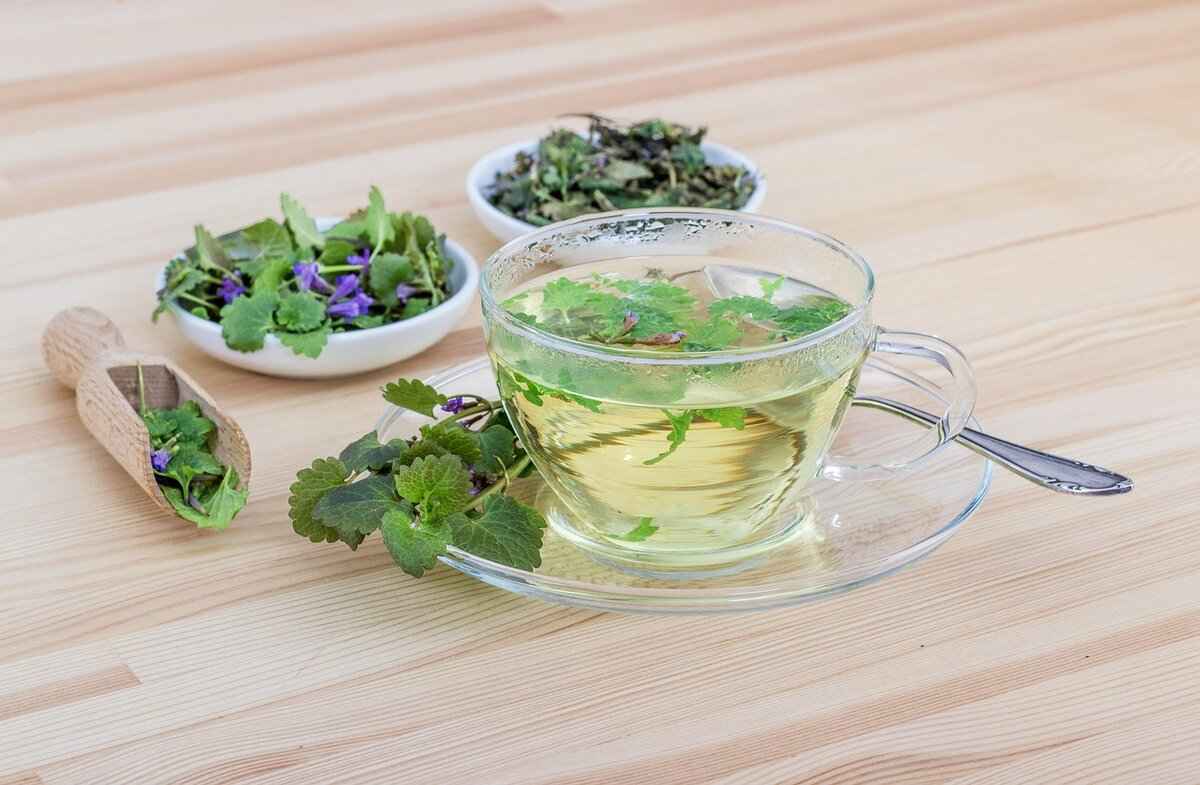
What Are the Cultural Significances of Each Beverage?
Both bubble tea and traditional herbal teas hold deep cultural significance in their respective communities, serving not just as beverages but as symbols of identity, tradition, and social interaction. This section delves into their historical backgrounds and roles in social settings, illustrating how these drinks connect people and cultures.
Bubble Tea: A Modern Cultural Phenomenon
Originating from Taiwan in the 1980s, bubble tea, also known as boba tea, has rapidly evolved into a global sensation. Its unique combination of tea, milk, and chewy tapioca pearls has captivated the taste buds of millions, especially among younger generations. The drink’s playful and customizable nature allows for endless variations, making it a popular choice for social gatherings and celebrations.
In contemporary culture, bubble tea shops often serve as communal spaces where friends gather to enjoy their favorite flavors while sharing experiences. The vibrant aesthetics of bubble tea, often showcased in social media posts, have further solidified its status as a cultural icon. This modern beverage has transcended its origins, becoming a symbol of youth culture and social connectivity.
Traditional Herbal Teas: A Link to Ancestral Wisdom
On the other hand, traditional herbal teas have been an integral part of Asian cultures for centuries, deeply rooted in history and medicinal practices. These teas, made from various herbs, flowers, and spices, are often consumed for their health benefits and are integral to traditional medicine. For instance, ginger tea is revered for its ability to aid digestion, while chrysanthemum tea is valued for its cooling properties and is often served during hot weather.
Herbal teas are not just beverages; they are often involved in rituals, celebrations, and family gatherings. In many Asian cultures, serving tea is a sign of respect and hospitality, reinforcing social bonds and cultural heritage. The preparation and consumption of herbal teas can reflect family traditions, passed down through generations, making them a vital part of cultural identity.
Social Roles and Rituals
- Bubble Tea: Often enjoyed in casual settings, bubble tea serves as a bridge for social interactions, particularly among friends and younger audiences. Its role in modern culture is marked by shared experiences and vibrant social media engagement.
- Herbal Teas: These teas are often associated with family gatherings, traditional ceremonies, and health-focused rituals, reinforcing the importance of community and shared heritage.
Conclusion
In summary, both bubble tea and traditional herbal teas play significant roles in their respective cultures. While bubble tea represents modernity and social connectivity, herbal teas embody tradition and ancestral wisdom. Understanding these cultural significances enhances our appreciation for each beverage, allowing us to make informed choices that resonate with our values and social contexts.
How Is Bubble Tea Perceived in Modern Culture?
Bubble tea, also known as boba tea, has transcended its origins in Taiwan to become a global phenomenon, especially among the younger generations. This vibrant drink, characterized by its chewy tapioca pearls and diverse flavor options, has not only captivated taste buds but also emerged as a cultural icon. Its rise in popularity can be attributed to various factors, including social media influence, unique flavor combinations, and its aesthetic appeal.
One of the most significant aspects of bubble tea’s cultural relevance is its ability to bring people together. Bubble tea shops have become social hubs, where friends gather to enjoy their favorite flavors while sharing experiences. This communal aspect resonates particularly well with millennials and Gen Z, who value social interactions and experiences over material possessions. The drink’s customizable nature—ranging from different tea bases to a variety of toppings—allows for personal expression, further enhancing its allure.
Moreover, the rise of social media platforms like Instagram and TikTok has played a pivotal role in bubble tea’s popularity. The visually appealing nature of bubble tea, with its colorful layers and playful toppings, makes it highly shareable. Users frequently post pictures and videos of their bubble tea creations, contributing to a viral trend that encourages others to try the beverage. This online visibility has not only increased its popularity but has also sparked a wave of creativity among bubble tea shops, leading to innovative flavors and unique presentation styles.
In addition to its social and aesthetic appeal, bubble tea serves as a representation of cultural fusion. The drink blends traditional tea with modern flavors and textures, symbolizing the merging of cultures in a globalized world. As it gains popularity in various countries, bubble tea has adapted to local tastes, resulting in unique variations that reflect regional preferences. This adaptability has allowed bubble tea to maintain its relevance across diverse cultural landscapes.
However, the rise of bubble tea has also sparked discussions regarding its health implications. While it is a fun and enjoyable beverage, concerns about its high sugar content and caloric value have emerged. Many consumers are becoming more health-conscious, prompting a shift towards more nutritious options. This evolving consumer mindset has led some bubble tea shops to offer healthier alternatives, such as reduced-sugar versions and plant-based toppings, catering to the growing demand for wellness-oriented products.
In conclusion, bubble tea’s journey from a local Taiwanese beverage to a global cultural phenomenon illustrates its significant impact on contemporary society. Its ability to foster social connections, adapt to cultural nuances, and respond to health-conscious trends showcases its multifaceted relevance. As bubble tea continues to evolve, it remains an exciting and dynamic part of the modern beverage landscape, reflecting the diverse tastes and preferences of today’s consumers.
What Role Do Herbal Teas Play in Traditional Practices?
Herbal teas have been a cornerstone of traditional practices in many Asian cultures for centuries. They are not just beverages; they are imbued with cultural significance and serve various roles in daily life and health practices. This section delves into the multifaceted role of herbal teas in traditional practices, highlighting their importance in rituals, medicine, and social gatherings.
In many Asian cultures, herbal teas are considered an integral part of traditional medicine. They have been used to treat various ailments, from digestive issues to respiratory problems. Ingredients such as ginger, ginseng, and chrysanthemum are commonly used for their healing properties. For instance:
- Ginger tea is known for its ability to aid digestion and reduce nausea.
- Ginseng tea is often consumed for its potential to boost energy and enhance cognitive function.
- Chrysanthemum tea is traditionally used to cool the body and improve eye health.
Beyond their medicinal benefits, herbal teas play a vital role in various cultural rituals across Asia. In countries like China and Japan, tea ceremonies are a significant part of social and spiritual life. These ceremonies are not merely about drinking tea; they embody principles of harmony, respect, and tranquility. The preparation and serving of herbal teas can be seen as a form of art, emphasizing mindfulness and appreciation of the moment.
Herbal teas also serve as a medium for social interaction. In many Asian households, offering tea to guests is a sign of hospitality and respect. The act of sharing tea can strengthen relationships and create bonds among family and friends. In communal settings, such as festivals or family gatherings, herbal teas are often served, enhancing the sense of community and shared experience.
As society evolves, so do the practices surrounding herbal teas. Today, herbal teas are gaining popularity beyond traditional settings. Many people incorporate them into their daily wellness routines, recognizing their health benefits. Additionally, modern cafes and wellness stores are now offering a wide variety of herbal tea blends, making them accessible to a broader audience. This shift reflects a growing awareness of holistic health and natural remedies.
Despite the advancements in modern medicine, herbal teas continue to hold relevance in contemporary society. They are often recommended by health practitioners for their natural healing properties. Furthermore, the rise of the wellness movement has led to a renewed interest in traditional practices, including the consumption of herbal teas. Many people are turning to these natural beverages as a way to enhance their well-being, reduce stress, and promote relaxation.
In conclusion, herbal teas are much more than just beverages; they are deeply woven into the fabric of traditional practices in Asian cultures. From their medicinal uses to their role in social interactions and rituals, herbal teas continue to be a vital part of life for many. As we move forward, their significance is likely to endure, bridging the gap between ancient traditions and modern health practices.
Frequently Asked Questions
- What is bubble tea made of?
Bubble tea, also known as boba tea, typically consists of tea mixed with milk or fruit flavors, along with chewy tapioca pearls. It’s a delightful blend that offers a unique texture and flavor experience!
- Are herbal teas really healthy?
Absolutely! Herbal teas are packed with benefits. They can aid digestion, boost your immune system, and even help you relax after a long day. Think of them as nature’s little wellness warriors!
- How does the sugar content in bubble tea compare to herbal teas?
Bubble tea can contain high levels of sugar, especially when flavored syrups are added. In contrast, most herbal teas are naturally low in sugar, making them a healthier option for those watching their sugar intake.
- Can herbal teas interact with medications?
Yes, some herbal teas can interact with medications. It’s crucial to consult with a healthcare professional if you’re on medication and plan to consume herbal teas regularly.
- Is bubble tea a good choice for weight management?
While bubble tea can be enjoyed in moderation, its high calorie and sugar content may not be the best choice for weight management. Herbal teas, on the other hand, are often more suitable for those looking to maintain a healthy weight.
- What cultural significance do herbal teas hold?
Herbal teas have deep roots in traditional practices and are often used in rituals and healing. They are celebrated in many Asian cultures for their medicinal properties and as part of social gatherings.

